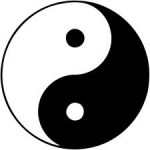The Disparate Cultures of Coffee and Tea
Coffee and tea have given rise to two great, largely divergent streams in the cultural history of caffeine. Coffee has become associated with the artist, the non-conformist or political dissident, the bohemian, even the hobo, its use often considered a vice, its consumption linked with frenetic physical and mental activity, intense conversation, and with other indulgences that threaten health, such as tobacco and alcohol. Tea, in contrast, has been associated with the drawing-room, quiet social interaction, spirituality, and tranquillity, and is regarded as the drink of the‚elite, the meditative, the temperate, and the elderly. These differences are easily seen by comparing the decorous traditions of the English afternoon tea and the Japanese tea ceremony with the ancient, worldwide, socially inclusive, and rough and ready institution of the coffee house. These same differences must underlie the fact that although coffee has been the subject of many bans by sultans, kings, chiefs of police, and religious leaders and opposed by many temperance movements, tea has rarely, if ever, appeared on anyone’s list as a substance that ought to be put beyond the pale of law or morality.
The more you think about it, the more paradoxical this duality within the culture of caffeine appears. After all, both coffee and tea are aromatic infusions of vegetable matter, served hot or cold in similar quantities, both are often mixed with cream or sugar, both are universally available in virtually any grocery or restaurant in civilized society, and both contain the identical psychoactive alkaloid stimulant, caffeine. It is true that coffee is generally brewed to a caffeine strength over twice that of a typical cup of tea, yet, because more than one cup of each beverage is commonly consumed, there is no doubt that you can get a full dose of caffeine from either one.
So the question remains: Why has the duality between the culture of coffee and the culture of tea become so universally and so sharply delineated? For example, why did tea become the center of a decorous, conventionalized, intimate social gathering in both England and Japan, while coffee failed to do so anywhere? And again, why did coffee become the convivial center of gossip, business, and political and intellectual banter in medieval Turkey, in London in the 17th century, and in dozens of American cities in the mid ’90’s, while tea failed to do so?

If you doubt the reality of this duality, examine this this strictly non-scientific Caffeine Culture Association List. For each pair of opposites, one aspect is assigned to coffee and the other to tea.
COFFEE-ASPECT TEA-ASPECT
Male Female
Boisterous Decorous
Bohemian Conventional
Obvious Subtle
Sordid Beautiful
Common Refined
Indulgence Temperance
Vice Virtue
Excess Moderation
Passion, Earthiness Spirituality, Mysticism
Down to earth Elevated
Mornings, Late Nights Afternoons
American English
Occidental Oriental
Casual Formal, Ceremonial
Demi-monde Society
Full-blooded Effete
Vivacious, Extroverted Shy, Introverted
Loquacious Reticent
Aggressive Lordotic
Yang Yin
Hard-headed Romantic
Promiscuous Pure
Work Contemplation
Individualism The Social Order
Excitement Tranquillity
Tension Relaxation
Kinetic Energy Potential Energy
Spontaneity Deliberation
Topology Geometry
Heidegger Carnap
Beethoven Mozart
Outlaw Good Citizen
The Frontier The Drawing Room
Libertarian Statist
Balzac Proust
These divergent traditions are visible in the early history and development of the caffeine culture as realized in the spread of the consumption of coffee and tea. They are consistent enough that divergent examples, such as the Bedouin coffee ceremonies and Arab concentrated tea swilling, emerge as exceptions to a rule. Cola beverages and other carbonated soft drinks containing caffeine do not have a long enough history to be as elaborately differentiated as coffee and tea: They do have distinctive associations, however, such as innocence, youth, middle class America, pop culture, and “good, clean fun.”
Among all the nations, the two that best exemplify both this unlogical duality between coffee and tea and the extent to which avid and widespread use of either can influence art, literature, architecture, politics, commerce, manners and society, are Japan and England. In Japan, the ancient discipline and enjoyment of teaism is a perfect embodiment of the tea-aspect of caffeine; while the coffee house in twentieth century Japan, a place of fast-paced conversational, social, and business interactions, is an instance of the coffee-aspect. In England, the boisterous male mélangeof the early coffee houses ideally exemplifies the coffee-aspect, while the refined, feminized afternoon tea, arriving later, manifests the tea-aspect. And finally, in both Japan and England, the old and the new abide together, so that coffee and tea are used in both tranditional and contemporary ways. Thus, a presentation of the culture of caffeine in Japan and England offers a uniquely comprehensive view of caffeine’s dual and powerful agencies.




I was originally dnnetiing this to be a starter machine. But my attempts to get formal barista training failed So the machine really hasn’t been used all that much as i mainly use my drip maker now. Plus with the lime down here in FL untill i had a good water solution an expensive machine would be a big loss
What a hilarious and fun list! Maybe I’ll mix my aromatic vegetable-matter infused water with the other kind and get all the associated philosophical benefits, or just more fun flavored caffeine water!
Happy you liked our list! You might also enjoy the book that we wrote in which it appeared: The World of Caffeine. Please check it out!
Doing this now, thanks.